


Photographs: lichtpunkt, Michael Ruder, Stuttgart Models and Illustrations: Annika Sauerborn
Copyright English translation copyright 2019 by Dover Publications, Inc. Copyright 2017 frechverlag GmbH, 70499 Stuttgart, Germany (www.topp-kreativ.de) All rights reserved.
Bibliographical Note This Dover edition, first published in 2019, is a new English translation of the work originally published in German by Topp-Kreativ, Stuttgart, in 2017. The original German edition was published as
Handlettering Schmuckelemente. The present edition is published by arrangement with Claudia Bhme Rights & Literary Agency, Hannover, Germany (www.agency-boehme.com).
Library of Congress Cataloging-in-Publication Data Names: Annika, Frau, 1983 author.
Title: An introduction to hand lettering with decorative elements/Annika Sauerborn. Other titles: Handlettering. English Description: Mineola, New York : Dover Publications, Inc., 2019. | Original edition published in German as: Handlettering : das grosse Buch der Schmuckelemente. Stuttgart : Topp-Kreativ, 2017. | BISAC: ART / Techniques / Calligraphy. | DESIGN / Graphic Arts / Typography. | ART / Techniques / Drawing. | CRAFTS & HOBBIES / Scrapbooking. | CRAFTS & HOBBIES / Scrapbooking.
Classification: LCC NK1530 .A299513 2019 | DDC 745.6/1dc23 LC record available at https://lccn.loc.gov/2018044695 Manufactured in the United States by LSC Communications 83393301 2019 www.doverpublications.com Foreword Theres no question about it: ornamental elements are the icing on the cake of lettering. They are not only decorative, but they can also fill gaps between words and serve as a frame. From a simple line to a magnificent flourish or an opulent floral garland, anything is possible. Ornamental elements, like the letters themselves, can also impart a special meaning into a message of lettering. We use hearts in things related to love, or we may embellish a birthday greeting with confetti. In the spring, we decorate with flowers; for Christmas, we decorate gift tags with stars and other holiday symbols.
Theres no question about it: ornamental elements are the icing on the cake of lettering. They are not only decorative, but they can also fill gaps between words and serve as a frame. From a simple line to a magnificent flourish or an opulent floral garland, anything is possible. Ornamental elements, like the letters themselves, can also impart a special meaning into a message of lettering. We use hearts in things related to love, or we may embellish a birthday greeting with confetti. In the spring, we decorate with flowers; for Christmas, we decorate gift tags with stars and other holiday symbols.
This book is both a hodgepodge and a treasure trove of various decorative elements. I drew all of these by hand, from simple borders and corners to ribbons and flowers to thematic illustrations. To make it easy for you to copy, I show you, step-by-step, exactly how some of the ornamental elements are created. At the end of the book, you will find a series of alphabets, which can be used as inspiration for your own lettering creations. An Introduction to Hand Lettering with Decorative Elements will make you want to take pen in hand to draw flowers, ribbons, and letters. Above all, it should inspire you to decorate your own lettering, which you can do with a little practice.
But you can also just browse through this book again and again to discover new ideas. Whatever you do with this book, have fun! ANNIKA SAUERBORN  Table of Contents
Table of Contents




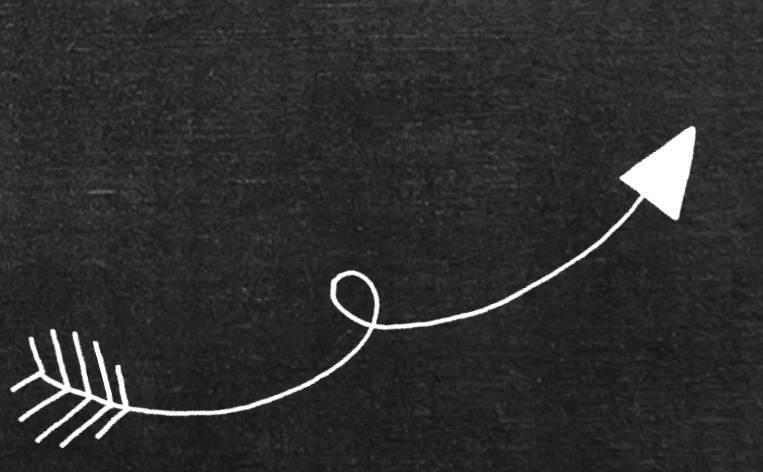 Materials The Correct Writing Instrument for Every Purpose The beauty of hand lettering is that you can use it on almost any surface. In addition to a large selection of papers, even fabrics, porcelain, glass, or wood are not safe from lettering. Thus, everyday objects such as storage jars, coffee cups, or shopping bags can be decorated. For each of these materials, there is also a corresponding pen or colors. A few basic things that you will need for hand lettering: Pencils (I use mostly pencils with a hardness of B or HB) Good eraser Pencil sharpener Sketching paper Ruler or triangle (to draw guidelines) Tracing paper (to work out designs) Fineliner pens But usually, everything starts with paper and a pencil.
Materials The Correct Writing Instrument for Every Purpose The beauty of hand lettering is that you can use it on almost any surface. In addition to a large selection of papers, even fabrics, porcelain, glass, or wood are not safe from lettering. Thus, everyday objects such as storage jars, coffee cups, or shopping bags can be decorated. For each of these materials, there is also a corresponding pen or colors. A few basic things that you will need for hand lettering: Pencils (I use mostly pencils with a hardness of B or HB) Good eraser Pencil sharpener Sketching paper Ruler or triangle (to draw guidelines) Tracing paper (to work out designs) Fineliner pens But usually, everything starts with paper and a pencil.
Your first ideas are sketched out and finally worked up, step-by-step. On the following pages, Id like to show which types of writing instruments you can use and what they look like.  Pencils Pencils come in different degrees of hardness. The harder the lead, the more delicate the stroke. A soft pencil creates stronger contrasts but smears more easily. I prefer the hardness level HB or B.
Pencils Pencils come in different degrees of hardness. The harder the lead, the more delicate the stroke. A soft pencil creates stronger contrasts but smears more easily. I prefer the hardness level HB or B.
These pencils are easy to erase and dont smudge. Drawing with colored pencils also has its appeal, and not only because of the colorfulness. There are also differences in quality. Therefore, it might be wise to try out different manufacturers products to discover your favorite brand of colored pencils.  Fineliner pens Fineliners are available in different thicknesses. You can draw anything from delicate hairlines to coarse strokes.
Fineliner pens Fineliners are available in different thicknesses. You can draw anything from delicate hairlines to coarse strokes.
Which pen you use depends on the size and detail of your drawing. Anyone who draws rough sketches will find felt-tip pens and markers helpful.  Brushes Working with brushes requires a bit of practice. The uneven stroke of a brush can be very charming and becoming, particularly for designing floral ornaments. You can also fill empty spaces with watercolors and brushes and bring them to life, especially when designing floral ornaments.
Brushes Working with brushes requires a bit of practice. The uneven stroke of a brush can be very charming and becoming, particularly for designing floral ornaments. You can also fill empty spaces with watercolors and brushes and bring them to life, especially when designing floral ornaments. 

 The Decorative Line The line is a simple element in the design; therefore, it can come out looking quite different.
The Decorative Line The line is a simple element in the design; therefore, it can come out looking quite different.
It can be a straight line, be composed of many elements put together, or have elaborate embellishments. While the decorative line in lettering often appears in the margins, it may also serve as a border edging or a unique way to emphasize words. 

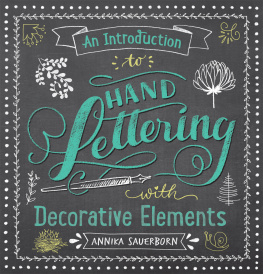

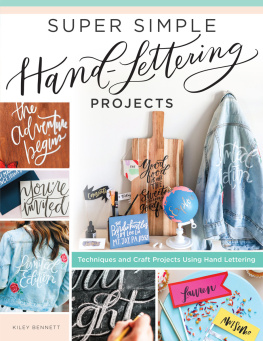
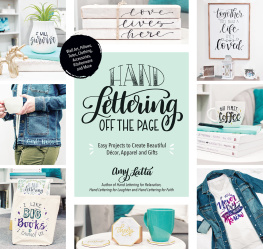
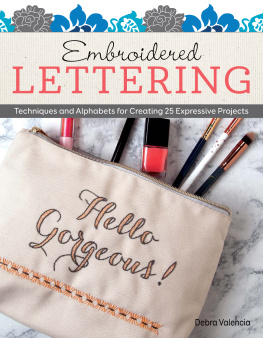
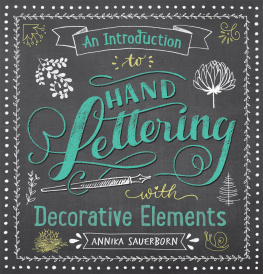
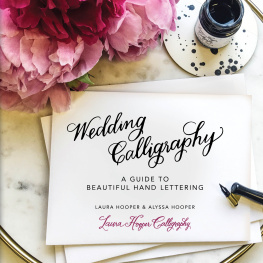
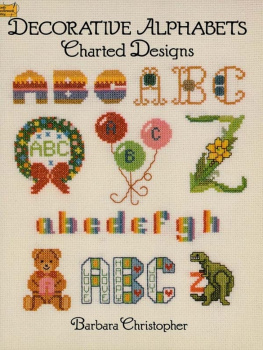
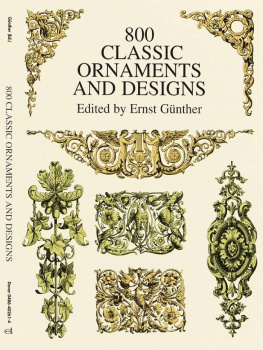



 Photographs: lichtpunkt, Michael Ruder, Stuttgart Models and Illustrations: Annika Sauerborn Copyright English translation copyright 2019 by Dover Publications, Inc. Copyright 2017 frechverlag GmbH, 70499 Stuttgart, Germany (www.topp-kreativ.de) All rights reserved. Bibliographical Note This Dover edition, first published in 2019, is a new English translation of the work originally published in German by Topp-Kreativ, Stuttgart, in 2017. The original German edition was published as Handlettering Schmuckelemente. The present edition is published by arrangement with Claudia Bhme Rights & Literary Agency, Hannover, Germany (www.agency-boehme.com). Library of Congress Cataloging-in-Publication Data Names: Annika, Frau, 1983 author.
Photographs: lichtpunkt, Michael Ruder, Stuttgart Models and Illustrations: Annika Sauerborn Copyright English translation copyright 2019 by Dover Publications, Inc. Copyright 2017 frechverlag GmbH, 70499 Stuttgart, Germany (www.topp-kreativ.de) All rights reserved. Bibliographical Note This Dover edition, first published in 2019, is a new English translation of the work originally published in German by Topp-Kreativ, Stuttgart, in 2017. The original German edition was published as Handlettering Schmuckelemente. The present edition is published by arrangement with Claudia Bhme Rights & Literary Agency, Hannover, Germany (www.agency-boehme.com). Library of Congress Cataloging-in-Publication Data Names: Annika, Frau, 1983 author.  Theres no question about it: ornamental elements are the icing on the cake of lettering. They are not only decorative, but they can also fill gaps between words and serve as a frame. From a simple line to a magnificent flourish or an opulent floral garland, anything is possible. Ornamental elements, like the letters themselves, can also impart a special meaning into a message of lettering. We use hearts in things related to love, or we may embellish a birthday greeting with confetti. In the spring, we decorate with flowers; for Christmas, we decorate gift tags with stars and other holiday symbols.
Theres no question about it: ornamental elements are the icing on the cake of lettering. They are not only decorative, but they can also fill gaps between words and serve as a frame. From a simple line to a magnificent flourish or an opulent floral garland, anything is possible. Ornamental elements, like the letters themselves, can also impart a special meaning into a message of lettering. We use hearts in things related to love, or we may embellish a birthday greeting with confetti. In the spring, we decorate with flowers; for Christmas, we decorate gift tags with stars and other holiday symbols. Table of Contents
Table of Contents




 Materials The Correct Writing Instrument for Every Purpose The beauty of hand lettering is that you can use it on almost any surface. In addition to a large selection of papers, even fabrics, porcelain, glass, or wood are not safe from lettering. Thus, everyday objects such as storage jars, coffee cups, or shopping bags can be decorated. For each of these materials, there is also a corresponding pen or colors. A few basic things that you will need for hand lettering: Pencils (I use mostly pencils with a hardness of B or HB) Good eraser Pencil sharpener Sketching paper Ruler or triangle (to draw guidelines) Tracing paper (to work out designs) Fineliner pens But usually, everything starts with paper and a pencil.
Materials The Correct Writing Instrument for Every Purpose The beauty of hand lettering is that you can use it on almost any surface. In addition to a large selection of papers, even fabrics, porcelain, glass, or wood are not safe from lettering. Thus, everyday objects such as storage jars, coffee cups, or shopping bags can be decorated. For each of these materials, there is also a corresponding pen or colors. A few basic things that you will need for hand lettering: Pencils (I use mostly pencils with a hardness of B or HB) Good eraser Pencil sharpener Sketching paper Ruler or triangle (to draw guidelines) Tracing paper (to work out designs) Fineliner pens But usually, everything starts with paper and a pencil. Pencils Pencils come in different degrees of hardness. The harder the lead, the more delicate the stroke. A soft pencil creates stronger contrasts but smears more easily. I prefer the hardness level HB or B.
Pencils Pencils come in different degrees of hardness. The harder the lead, the more delicate the stroke. A soft pencil creates stronger contrasts but smears more easily. I prefer the hardness level HB or B. Fineliner pens Fineliners are available in different thicknesses. You can draw anything from delicate hairlines to coarse strokes.
Fineliner pens Fineliners are available in different thicknesses. You can draw anything from delicate hairlines to coarse strokes. Brushes Working with brushes requires a bit of practice. The uneven stroke of a brush can be very charming and becoming, particularly for designing floral ornaments. You can also fill empty spaces with watercolors and brushes and bring them to life, especially when designing floral ornaments.
Brushes Working with brushes requires a bit of practice. The uneven stroke of a brush can be very charming and becoming, particularly for designing floral ornaments. You can also fill empty spaces with watercolors and brushes and bring them to life, especially when designing floral ornaments. 

 The Decorative Line The line is a simple element in the design; therefore, it can come out looking quite different.
The Decorative Line The line is a simple element in the design; therefore, it can come out looking quite different.